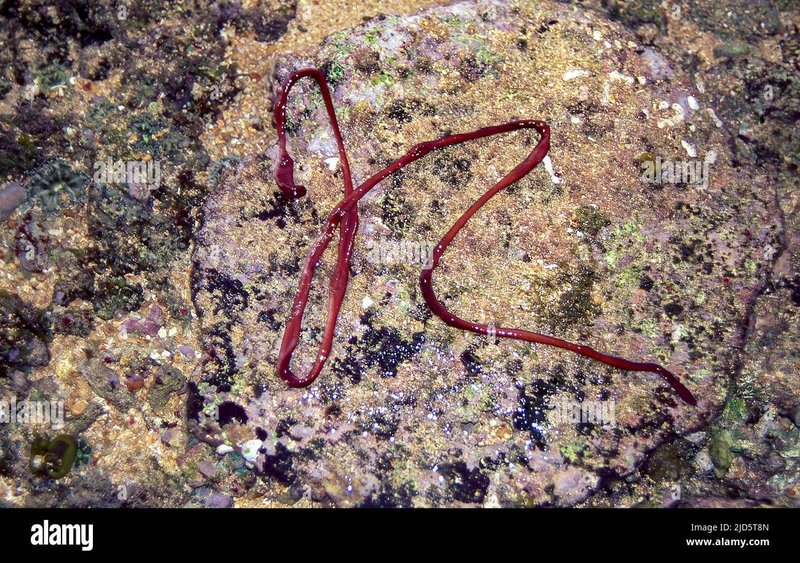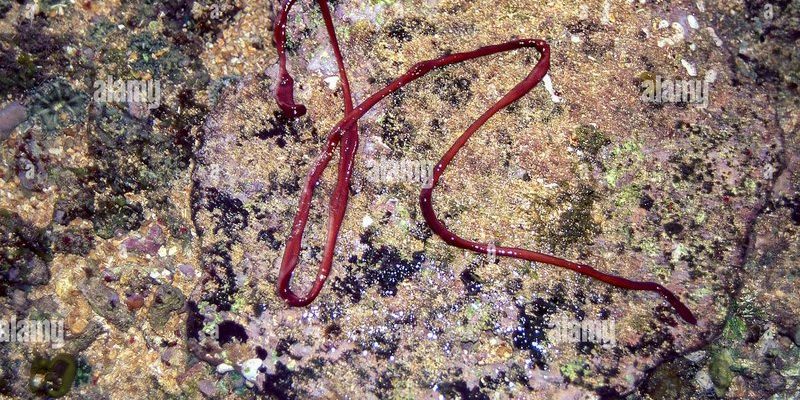
Ribbon worms, or *Nemertea*, are not just your average sea critters. They come in various colors and sizes, and identifying them can be as easily manageable as picking your favorite ice cream flavor. In this guide, I’ll walk you through some interesting details about these creatures, how to spot them, and why you should care about them. So, grab your flip-flops, and let’s dive right in!
What Are Ribbon Worms?
Before we jump into how to identify ribbon worms, let’s get a bit of background on these intriguing creatures. Ribbon worms belong to a group of invertebrates that have a soft, elongated body that can vary in length from just a few centimeters to several meters! Imagine a long piece of spaghetti swimming in the ocean—that’s kind of what they look like.
These fascinating animals are primarily found in marine environments, especially in sandy or muddy areas near the coastline. You might be wondering, “What do ribbon worms even eat?” Well, they’re carnivorous, feasting mainly on small fish and invertebrates. They have a unique feeding system; they shoot out a sticky proboscis to capture their prey. Isn’t that wild?
Where to Find Ribbon Worms
When searching for ribbon worms, the best places to look are coastal rock pools. These areas serve as small underwater ecosystems filled with life. Generally, ribbon worms hide within crevices or under rocks, making them a bit tricky to find.
You should visit during low tide when the pools are exposed. Gently lifting the rocks and searching through the sand will reveal these creatures. And pay attention! They can often blend in with the colors of their surroundings, so look closely. You might find them hiding among the algae or beneath the seaweed.
Here are a few tips to enhance your search:
- Choose a sunny day; it helps visibility in the water.
- Bring a small container to collect any samples you find (just remember to put them back later).
- Wear gloves to avoid harming the delicate ecosystems.
Recognizing Ribbon Worms’ Color and Shape
Identifying ribbon worms can start with their distinct shape and colors. They’re typically long, thin, and somewhat flat, resembling a piece of ribbon—hence their name! You’ll find them in various shades, from bright orange and yellow to dark brown and even green.
Some people even mistake them for other creatures, like eels or flatworms, but there are a few key features that set them apart. Ribbon worms usually have a pointed head and no visible segmentation. If you gently touch them, you’ll notice they’re soft, unlike the tougher skin of eels.
Another cool aspect to note is their ability to change color slightly when disturbed. You might see them shift hues, which is their way of blending in with the surroundings. Honestly, that’s a neat survival trick, right?
How to Handle Ribbon Worms Responsibly
If you’re lucky enough to find a ribbon worm, it’s essential to handle it responsibly. Remember, they are living creatures that play a role in the ecosystem. Here are some guidelines to follow:
- Use wet hands when picking them up to avoid drying out their skin.
- Keep your time handling them brief to minimize stress.
- Always return them to their original spot to ensure they remain safe.
Sometimes, you might want to take a closer look without touching. If that’s the case, bring along a magnifying glass or a container for observation. This way, you can enjoy watching them wiggle without causing harm.
Why Ribbon Worms Matter
You might wonder, “Why should I care about ribbon worms?” Well, these creatures play a vital role in their environments. They help maintain a balance by preying on small animals and acting as food for larger species. Their presence indicates a healthy ecosystem.
Moreover, ribbon worms contribute to nutrient cycling in coastal habitats. Their interactions can also tell scientists a lot about environmental changes. So, spotting these creatures can be more than just a fun activity; it can help us understand the health of our oceans!
Common Mistakes When Identifying Ribbon Worms
When searching for ribbon worms, beginners often make a few common mistakes that can lead to confusion. For instance, many people mistake them for flatworms or the larvae of other sea creatures. It’s easy to get mixed up, but here are a couple of tips to help you avoid these pitfalls:
- Look for the ribbon-like shape and soft body; if it’s more cylindrical or tough, it’s likely not a ribbon worm.
- Check for the proboscis; if you see a feeding tube, that’s a clear sign you’ve spotted a ribbon worm!
And remember, patience is key! Sometimes they don’t come out immediately, so take your time and keep your eyes peeled.
Final Thoughts on Ribbon Worms
Exploring coastal rock pools and identifying ribbon worms can be both a fun and educational experience. With their unique forms and roles in the marine ecosystem, these creatures are worthy of our attention and respect. So, the next time you roam along the shoreline, take a moment to appreciate the diverse life teeming in those small pools.
Whether you’re a curious beachgoer or someone seeking a deeper connection with nature, keep an eye out for those fascinating ribbon worms. They might just be the hidden gems of the shore! Happy exploring!

